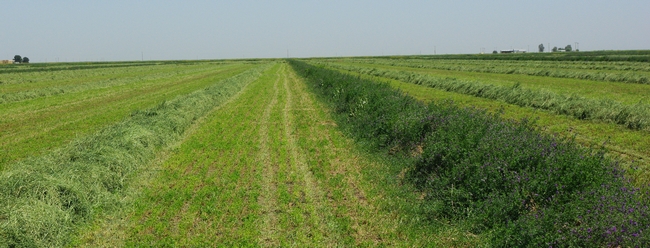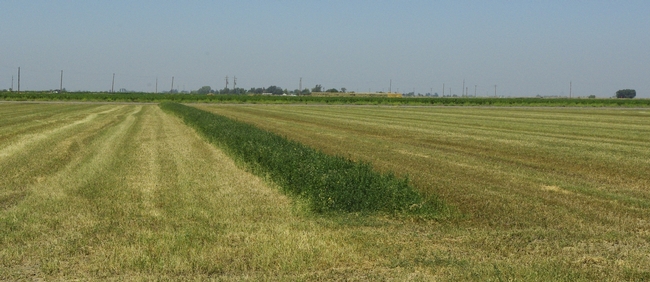Preventing Lygus bugs from coming into a cotton field is the next best thing to not having the pest at all. Since cotton is embedded in a complex cropping mosaic, bugs building in neighboring fields can move to cotton. While cotton is not a preferred crop for this insect to set up a household, it will, nonetheless, settle in if nothing else is available.

Since there is no indication from the plant that harvest is imminent, there is no urge to leave the alfalfa field. Our studies have shown Lygus will remain in a harvested alfalfa field for up to 24 hours before leaving.
However, if given a choice, such as an uncut strip of alfalfa, Lygus will stay longer in the alfalfa field and may not leave at all. Additional trials at Kearney Ag Center demonstrated that the population density within a strip can triple compared to density prior to harvest. In other words, they will stay on their familiar host as long it is available.

Throughout the San Joaquin Valley, alfalfa strips have become common and according to farmer testimonials, resulted in substantial savings in cotton treatment costs. These green islands provide a refuge for a reluctant pest and have been incorporated into the cotton IPM programs of thoughtful and progressive farmers.
For more information, see:
The IPM website page on managing Lygus in alfalfa
An impact statement on management of forage quality in strip-cut alfalfa